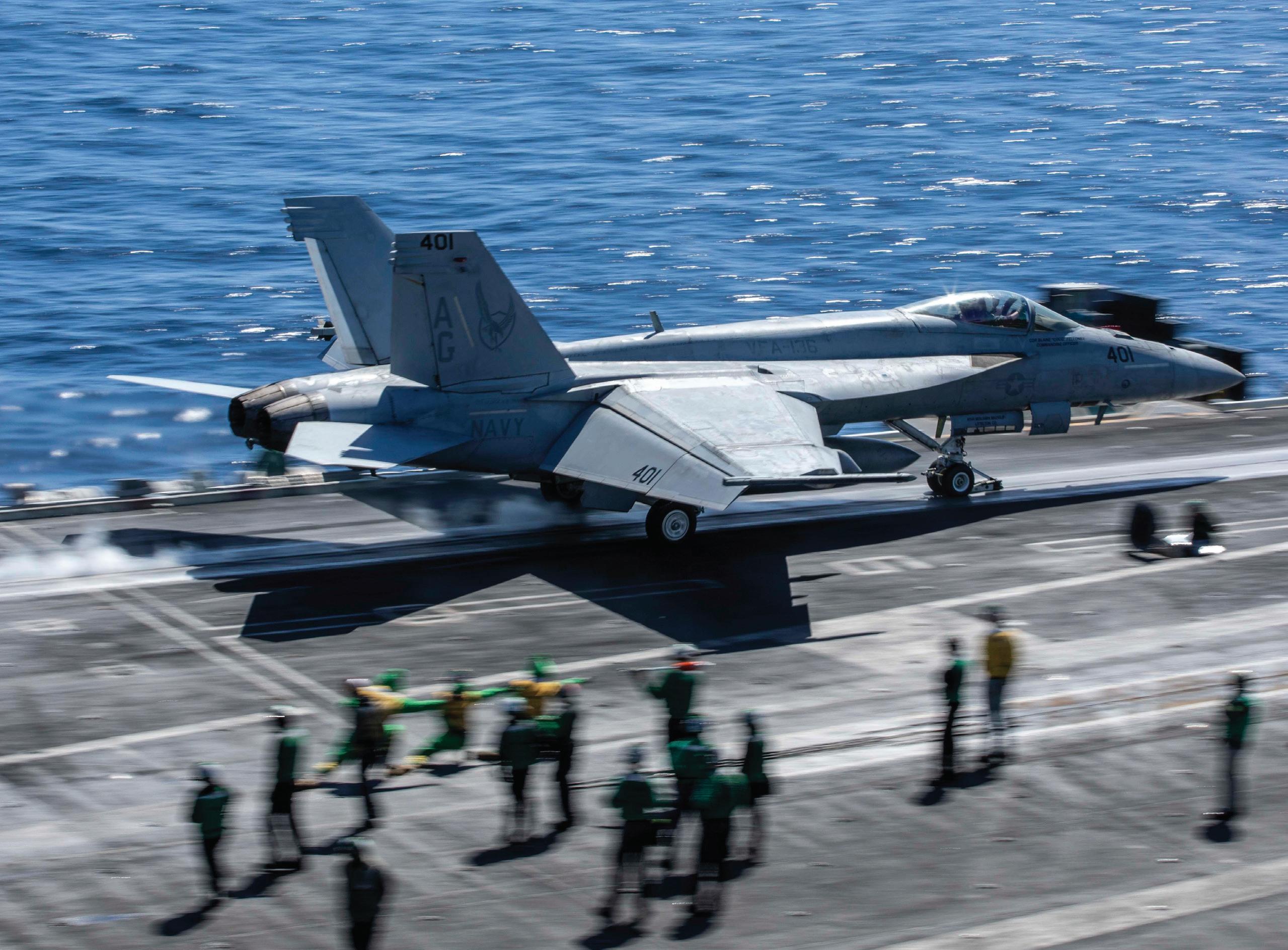
4 minute read
Runway Incursions & Hot Spots
By Lt. Dexter Clark, VP-45
Everybody knows the feeling. You’re in an unfamiliar area trying to make it to your destination on time and your navigator is not being as helpful as you’d like it to be. Then it happens. You take a wrong turn and suddenly your ETA ticks to the right and you’re going to be late. Now, imagine that instead of driving your car, you’re taxiing a 170,000-pound aircraft trying to make an on-time departure. Suddenly, the stakes are raised. No longer is it as easy as waiting for your GPS to reroute you, now you’re faced with possibly turning the wrong way down a one-way taxiway, turning down a taxiway that may not support your aircraft weight, or in the worst case scenario: creating a runway incursion.
Airfield managers wanted to try and alleviate some of the concerns of unfamiliar airfield operations; thus, the “Hot Spots” concept was born.
The International Civil Aviation Organization’s Procedures for Air Navigation Services-Air Traffic Management (ICAO PANSATM) Doc 4444 defines a runway incursion as “any occurrence at an aerodrome involving the incorrect presence of an aircraft, vehicle or person on the protected area of a surface designated for the landing and takeoff of aircraft.” Accidents like the 1977 Tenerife airport disaster come to mind when hearing a definition like this. It becomes immediately obvious that knowing one’s location on an airfield at all times is of the utmost importance. That seems easy enough, but often airfield designs can be challenging to navigate. It doesn’t stop there either. Many locations around the country airports are packed close together and runways are in similar layouts. Continental Airlines landed at Cabaniss NOLF (Naval Outlying Field) instead of Corpus Christi International Airport because of similar runways. Naval Air Station Key West and Key West International Airport are only three miles apart and have runways on similar headings. At Naval Air Station Whiting Field, the primary flight training field and the advanced helicopter training field are separated by only a few roads between them, and many students have lined up for the wrong field. A careful chart study can help alleviate these concerns and prevent runway incursions by landing on the incorrect runway.
Runway incursions have always been a severe issue in aviation. Still, as the industry has grown exponentially over the past few decades, runway incursions have increased at almost an equal rate. One of the solutions that was identified as a countermeasure was the hot spot. The ICAO PANS-ATM defines a hot spot as “a location on an aerodrome movement area with a history or potential risk of collision or runway incursion and where heightened attention by pilots and drivers is necessary.” The Federal Aviation Administration (FAA) mirrors that statement by saying, “Typically, a hot spot is a complex or confusing taxiway-taxiway or taxiway-runway intersection.” The program started at Las Vegas McCarran International Airport and Phoenix Sky Harbor International Airport. There are now 154 airports with identified hot spots. Hot spots have paid dividends in the airports that have adopted them. At McCarran International Airport, a hot spot was added at the departure end of runways 1L and 7L to help identify areas that risked wrong runway departures and were easily confused by pilots. Reports
Did You Know?
As of May 19, 2022, the FAA has standardized the Hot Spot symbols to three shapes with two distinct meanings: a circle or ellipse for ground movement hot spots and a cylinder for wrong surface hot spots.
following the addition of the hot spot indicate there is no longer confusion. In San Francisco, a hot spot was added to an intersection where turns were missed, leading to aircraft proceeding up a high-speed taxiway and coming nose-to-nose with traffic on runway 28L. The hot spot has been so successful without repeat issues for so long that they are considering removing it from the airfield diagram. A third success story occurred at Tucson International Airport. Two sets of intersections were responsible for 20% of pilot deviations at the airfield; due to the addition of hot spots in the diagram plus updated signage, those intersections no longer cause issues.
number of airfields to stop at is nearly limitless. Although that kind of flexibility pays dividends for flight planning and the ability to make it anywhere very efficiently, it also comes with great responsibility as a flight crew to thoroughly flight plan and identify where issues may arise. NAS Jacksonville, where half of the P-8A fleet resides, is a relatively simple airfield. Usually, it has only one active runway and one main taxiway. Going from operating at a field like that to a place like Honolulu International Airport can be daunting. But proper chart review can alleviate those stresses. The FAA created hot spots to help pilots locate common hazards and prevent incidents like runway incursions from happening. Even though these are new in the grand scheme of aviation, they’ve made a considerable difference in aviation safety and will continue to improve airfield operations for years to come.
Hot spots don’t just pertain to pilots either. Air traffic controllers and airfield drivers should also be wary around these locations on airfields. The FAA has compiled resources for each of these groups regarding runway safety which can be found on their website, www.faa.gov/airport/runway_safety/. From that website are links to online courses, videos and other publications that can help everyone more safely operate on the airfield. As professionals, it’s important to exhaust the resources given to hone one’s craft and improve the industry.
As a long-range multi-mission aircraft, the P-8A Poseidon crews frequently operate at unfamiliar airfields. Whether flying to a new city to display aircraft at an air show or departing home base for deployment, the











